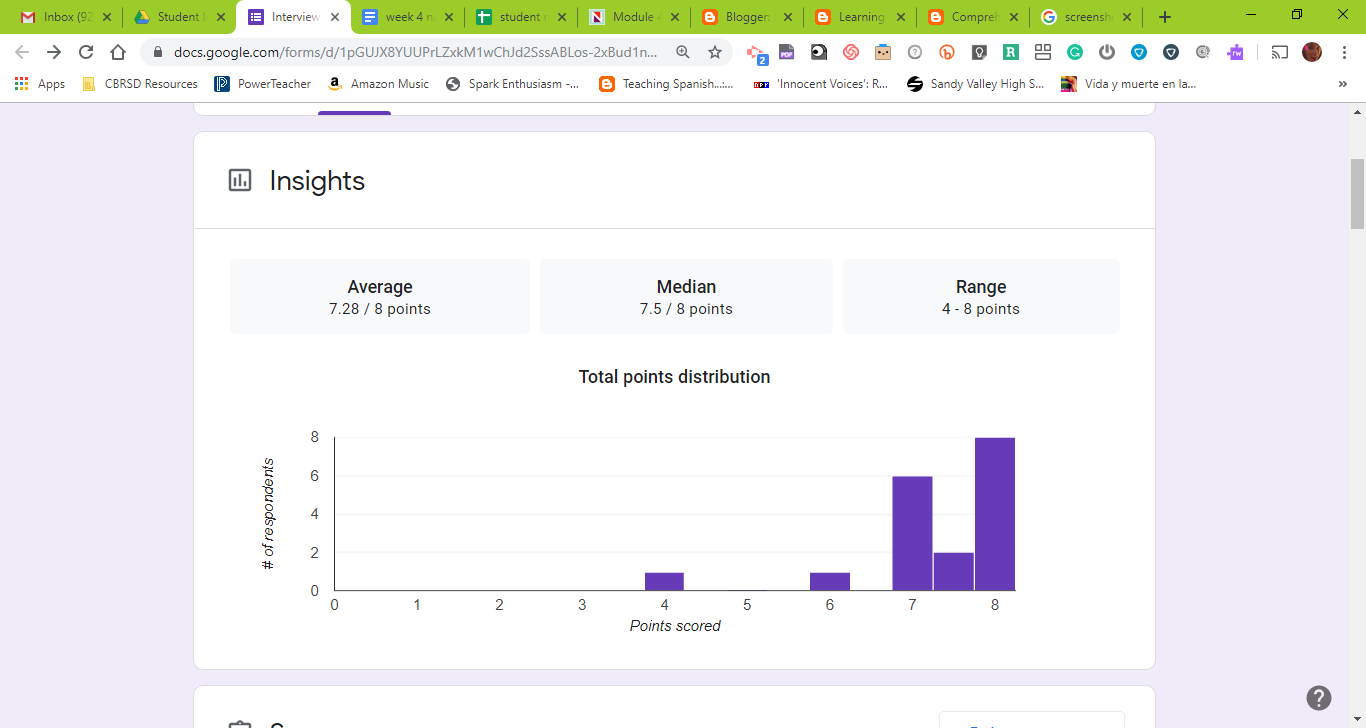Students' Funds of Knowledge and C.I.
This past week, I made a funds of knowledge survey, using Google Forms, for all of my students to fill out. (I heavily borrowed the questions from this prezi!) I used the survey to get the students thinking about their own culture, their own traditions, and what makes them, well, them.
We will be doing some deep dives into other cultures with what remains of the school year, so this was the opening to make comparisons between our own cultures and those that we will be studying. It was also an excellent way for me to gather some more background info about my students.
One unexpected but interesting thing that I learned was that the students who do not do things with their families were also the least engaged students that I have in my classes. Food for thought as a parent, for sure!
The next step to digging into students’ funds of knowledge was done by conducting a CI technique. CI is short for Comprehensible Input, which is a method of delivering students with understandable language that also pushes their boundaries a little bit. We did Student Interviews. That is basically exactly what it sounds like - we interview a student. When you do this in the CI way, you ask the student questions, ask more questions about their answers to dig deeper, and you keep at it for a little while, new questions, dig deeper, circle back, etc. After the interview, students in the whole class help you write down what happened in the interview, and then at the end, there is a short exit ticket to see how well the whole class understood.
Since this was my first time doing a Student Interview, I started with a few of the questions that were on the Funds of Knowledge survey. Students had just answered them, so they felt comfortable with the questions, and not like they were being put on the spot. Right off the bat, after the first time doing a student interview, I learned that this particular student likes to make videos - not TikToks, but imovies with her friends. How easy will it be to incorporate that knowledge into a project!?!
Also, I noticed that more students were interested in what was happening in class and ostensibly enjoyed the activity. The grades were also pretty fantastic - there were 8 questions on the exit ticket - here is the score distribution:

Tapping into the students’ lives, what they are interested in, and leveraging that into learning will not only lead to increased engagement, a total win, but will also be an excellent segue to teaching the same students about different cultures, drawing comparisons, discussing differences, and seeing how it all impacts society at large. I am excited to see where this can go!
We will be doing some deep dives into other cultures with what remains of the school year, so this was the opening to make comparisons between our own cultures and those that we will be studying. It was also an excellent way for me to gather some more background info about my students.
One unexpected but interesting thing that I learned was that the students who do not do things with their families were also the least engaged students that I have in my classes. Food for thought as a parent, for sure!
The next step to digging into students’ funds of knowledge was done by conducting a CI technique. CI is short for Comprehensible Input, which is a method of delivering students with understandable language that also pushes their boundaries a little bit. We did Student Interviews. That is basically exactly what it sounds like - we interview a student. When you do this in the CI way, you ask the student questions, ask more questions about their answers to dig deeper, and you keep at it for a little while, new questions, dig deeper, circle back, etc. After the interview, students in the whole class help you write down what happened in the interview, and then at the end, there is a short exit ticket to see how well the whole class understood.
 |
| Here is a blog post with resources on how another teacher approaches student interviews if this is something that interests you - at the bottom of the post the author lists several reasons why this method is fantastic. |
Also, I noticed that more students were interested in what was happening in class and ostensibly enjoyed the activity. The grades were also pretty fantastic - there were 8 questions on the exit ticket - here is the score distribution:
Tapping into the students’ lives, what they are interested in, and leveraging that into learning will not only lead to increased engagement, a total win, but will also be an excellent segue to teaching the same students about different cultures, drawing comparisons, discussing differences, and seeing how it all impacts society at large. I am excited to see where this can go!


Comments
Post a Comment